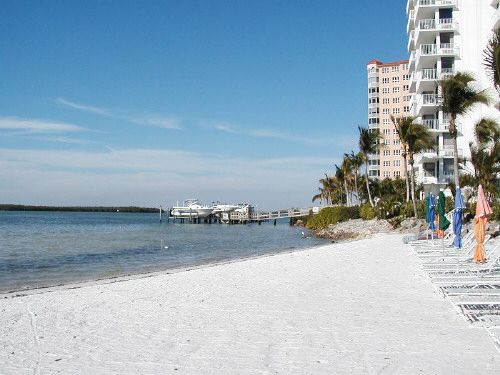Now is the time to buy! Get in on a once in a life time opportunity! Don’t miss out on historic real estate prices! Any of these phrases sound familiar? They do to me. I’ve been seeing them in my inbox for the past year on a daily basis promoting Southwest Florida Investment Property.
I have been fortunate to live up North during the Summers and South during the past five winters. Four of those five winters have been in Southwest Florida, while the other was in Cabo San Lucas, Mexico and Jaco Beach, Costa Rica. Traveling frequently has allowed me to see that every market has a unique thumb print.
After a break last winter from Florida due to the depressing economy, I have returned in 2010 to find slight improvements in the market. More people seem to be in the area filling the restaurants and shopping centers that so desperately need patrons. Upon a few days of driving around however, you will soon realize that this market has a long way to come. The Fort Myers/Cape Coral/LeHigh Acres were a poster child for the housing boom.
An area less than a quarter mile away from the Twins practice complex was selling condos at the peak for $225,000 for a 3 bedroom in a condo conversion. These were average units with white appliances and cabinets, carpet and laminate in the bathroom. They needed about $10,000 – $20,000 of upgrades in my opinion. These same condos today have been selling at short sales for $40,000 to $50,000.
In Denver, I fix and flip distressed properties, so it was natural for me to explore the foreclosure process here in Lee County, Florida. The Denver real estate market, which is a population roughly of 610,000, averages about 60 properties per week that are bid on every Thursday. The Lee County auctions are held on average 4 days per week with 40-60 properties per day, while their population is 590,000. There are so many properties per week in Lee County, that the auctions are held on-line. This is to allow out of state and even country bidders to participate in the auctions remote.
Fort Myers Cape Coral Real Estate Market Trends
The market took about a 70% swing from around 33% annual appreciation, to a 35% annual depreciation in less than 3 years. According to my data, the current market bottom is in the 4th quarter of 2008. I am not calling a bottom for the market. I am stating the actual statistics for the overall market, which currently is still experiencing a 10% annual depreciation on the current quarter data annualized.
Fort Myers by the numbers, is roughly the size of Denver, yet has nearly 4 to 5 times the amount of foreclosures. As I mentioned earlier, if you drive around for a few days, you will see a trend.
In the building boom, residential builders wanted to get in on the easy money. Simple supply and demand tell us that with a high demand for land, the acquisition price increases. This forced builders to buy land further from populated areas in order to generate a targeted profit. These less populated areas such as Cape Coral and Lehigh High acres got crushed by the bursting of the housing bubble.
Prior to the bursting of the housing bubble, these areas were selling duplexes for over $300,000. These same properties, built 2000 or newer are now selling for $60,000-$90,000. With such a low purchase price, the numbers for investors can make sense. I want to express my opinion here. These properties should be purchased for cash flow portfolios only. I do not believe the type of people who purchase these duplexes and single family homes will want to retire in these homes. There are exceptions and my recommendation is for perspective buyers to make a trip and conduct on site due diligence.
The other trend that is more attractive in my prospective is the commercial opportunity. Too much commercial real estate was built in the Southwest Florida Investment Property market. Nearly 1/3 of commercial property I see is vacant and advertising for tenants. The problem, is that the developer paid too much for the land or building costs. With high input numbers, developers can not afford to lease these properties at market rent.
These commercial properties will go back to the bank as a non-performing note, which will create a great opportunity for well positioned investors. In my experience, smaller banks who made commercial loans, are more likely to try and manage a non-performing asset into a performing asset. This is because smaller banks may not be able to take the loss like larger banks can.
Larger banks are more willing to take a loss on a property for several reasons. One reason is that they likely do not have the personnel on the ground to physically manage the property. Another reason that the general public does not know about is that losses on certain properties are covered by TARP funds. I personally saw a mobile home park deal that was appraised at nearly 20 million, sell for under 4 million. Why? The loss was covered by TARP funds. That mobile home park deal was operating at nearly a 40% cap rate!
Southwest Florida was a market devastated by the bursting of the housing bubble and is slowly making a come back. It still has years to go in my opinion, but certain opportunities are starting to emerge that make sense for both residential and commercial investors. Understanding the market conditions, along with the property location will allow investors to make informed decisions that may add significant value to their real estate portfolio.

Leave a Reply
You must be logged in to post a comment.